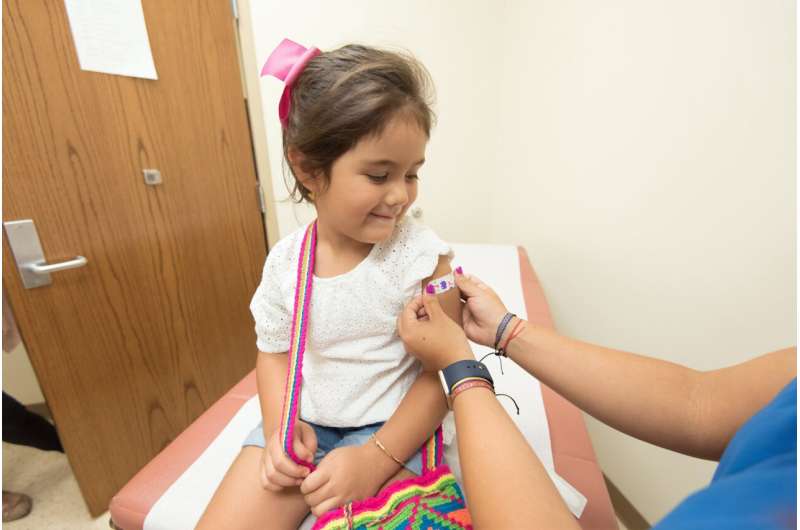Ask the Pediatrician: What should parents know about COVID-19 vaccine for children under 5?

Q: I have heard that there’s an approved COVID-19 vaccine for children under 5. What do I need to know about it?
A: As the parent of an infant, I join so many of you in feeling a roller coaster of emotions, including sheer relief, now that COVID-19 vaccines for babies age 6 months through 4 years are recommended by the Centers for Disease Control and Prevention and authorized by the Food and Drug Administration.
The American Academy of Pediatrics recommends the COVID-19 vaccine for children in this age group.
Up to 18 million infants and children under age 5 had been ineligible for the vaccine until now—and those under age 2 years are too young to wear a mask.
Since the beginning of the pandemic, without the vaccine, more than 2 million children younger than 5 have been infected with COVID-19, and more than 400 young children have died from COVID-19. We have also seen the impact of COVID-19 on children through more infections, hospitalizations, and deaths than from many other vaccine-preventable diseases, especially among children and families who identify as Black, Latinx, and Native American.
Many children do get very sick from COVID-19, including with multi-system inflammatory syndrome in children (MIS-C). Some children will end up with long COVID, which we’re only just beginning to understand, and other post-COVID-19 effects, including a higher risk for new- onset diabetes after recovery.
The good news is that vaccination in our littlest ones, just like for older kids and adults, is likely to prevent serious infection, complications, and death related to COVID-19. For example, in one study, two doses of the Pfizer vaccine reduced MIS-C by 91% in youth 12 to 18 years of age.
The FDA has conducted a very careful and thorough review of the safety and effectiveness vaccine data for children under age 5, and I’m confident that the FDA authorization means we can be sure that either vaccine will do its job, safely and effectively.
The vaccines for our littlest ones are made up of much smaller doses than the adult vaccines—Moderna’s is two doses (each a quarter of the adult dose) one month apart for kids 6 months to 5 years and Pfizer’s is three doses (each a tenth of the adult dose) over 11 weeks for kids 6 months to 4 years. Both vaccine regimens showed similar antibody responses in kids as the adult studies. No significant safety concerns were raised in the trials, and we also now know that millions of children over age 5 have safely received a COVID-19 vaccine.
The bottom line: I have confidence in these vaccines’ ability to significantly and safely reduce the risk of serious harm from COVID-19 for our littlest ones, and that’s why I’m planning to get my son vaccinated as soon as possible, with either regimen that’s available. These vaccines will help families breathe easier and be able to connect in-person again with greater protection.
Millions of children and teens have been vaccinated. Many still need to get immunized. Children will have the highest degree of protection two weeks after they get the last required dose.
There are some steps we can keep following to stay as safe as possible, especially during surges:
- Continue to mask indoors with a high-quality and well-fitted mask, such as an N95 or KF94, or use a double mask (cloth over medical mask), for those 2 years and over. While children under 2 are too young to be masked, one tip is to use the rain cover on a stroller to give them an added layer of protection when they’re in public.
- Cocoon our little ones by making sure everyone around them who can be is vaccinated, and their siblings 5 years and older are boosted.
- Keep gatherings small and ideally only with other households who are boosted. Consider taking rapid tests before gathering.
- When possible, travel by road instead of by plane or train to minimize contact with others who could be carrying the virus, especially those whose vaccination status is unknown.
- Minimize contact with large groups indoors, like at restaurants.
- See friends and family outdoors when possible. If indoors, make use of good ventilation—open windows, use filters and window fans.
Source: Read Full Article
